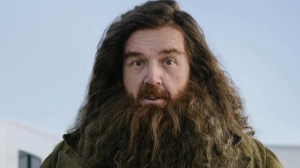With Barry Allen missing it’s all speedsters on deck trying to locate the missing hero. The search began in The Flash #783, but on July 19th the hunt continues with the second part of “The Search For Barry Allen Part 2” in The Flash #784 and it’s a complex affair. Heroes including Wally West, Jay Garrick, Jesse Quick and more have to face multiple realities — each with their own perils — as they race to find the real Barry. While that sounds like a wild adventure of its own, the issue is also a Dark Crisis tie-in issue, offering DC Comics fans an action-packed story that not only has major ramifications for The Flash family, but also important ties for the DC Universe on the whole.
Videos by ComicBook.com
ComicBook.com sat down with The Flash writer Jeremy Adams and Artist Amancay Nahuelpan to talk about The Flash #784, “The Search for Barry Allen”, the challenges of creating a story that is both very much its own entity while also being part of the larger Dark Crisis event and more — including a no-spoilers tease that things may be about to get very interesting for one member of the Flash family.
The Flash #784 goes on sale Tuesday, July 19th. Read on for our chat with Adams and Nahuelpan.
.
ComicBook.com: The Flash #784, like the issue before it, it’s technically a Dark Crisis tie-in, but also like the issue before it, it really stands alone as its own really good Flash story. I wanted to know how you guys balance the idea of it being a tie-in story and having those elements, but also crafting it as something that really does just stand as part of the overall Flash-ness of it all.
Jeremy Adams: I will tell you from my point of view, as a poor little kid that only got comic books on spinner racks, there is nothing that drove me more insane than getting a piece of an event and not having allowance money or anything to be like, I can’t get the six other pieces. Just going like, it’s not at the 7-11, what do I do? Because we didn’t have comic book stories. I always try to do that. The War for Earth-3, like, hey, you need to do this thing. It’s like, great, but there’s another story going on here. And I want to tell that story as well. The best way to describe it is if you’re watching Grey’s Anatomy, or I’m trying to think of another good, like Buffy and Angel would do this all the time.
They would have a crossover, right, but it stood alone within the context of the story they’re telling. And to me that’s the most satisfying thing as a viewer is to go, oh, here’s a tale and see Flash. And then I just saw your son go by. It’s satisfying in terms of just going … and the reality is, I don’t know as much about what’s going on with Dark Crisis too. It’s safety for me. I can tell my story. I know a little bit at a time, and I think they do that purposefully. I’m like the Tom Holland of DC Comics, right? It’s easier for me to stay within the lanes of The Flash comic and what’s going on. And I think it’s fair to the fans because they want to know about Linda and her powers. They want to know about different things going on in the storyline. And I would hate it if I had to wait three months to talk about some of that stuff in the book. They would just suddenly stop talking about it.
.
For you, Amancay, the same question. How do you balance knowing that it’s both part of The Flash and part of something larger?
Amancay Nahuelpan: Well, it’s a little bit similar to what Jeremy was saying, and one of the things that I’ve loved of Jeremy’s scripts, not only these ones but previous Flash scripts, is that it’s very easy to catch up even if you haven’t read issues before. You can just jump in and it’s like, oh cool, I don’t need to know whatever happening before because I can totally understand what’s happening here. And one of the fun things of these issues we’ve been working on it’s that, as he said, because there’s three worlds, it’s a little taste of three different stories, but you don’t really need to know anything else out of these stories. Even if you get like the issue of 784, you probably don’t even need to read 783 to understand what’s happening because it’s showing you what would happen in these worlds. Obviously, if you read all of the three issues, you’ll get the better idea of it. But still, if you’re that little kid that didn’t have access to the other issues, even if you read this story, it’s going to be a fun adventure story that’s going to grab your attention and maybe make you want to read the rest of the stories.
And from the different worlds point of view, that’s also a fun challenge for me as an artist to explore these different worlds and different styles. One of the things we’ve been talking about a lot here has been how for the Retro Flash world, it was quite a challenge for me to adapt my style to this more simplistic looking art from that era rather than the more detailed and shadowy looking stuff that I usually do. Yeah, that’s been something that has been keeping me on board, always interested in wanting to go down and hit these pages and make them as fun as possible for whoever is jumping in for the first time. I know a lot of people that didn’t read issues before and they just grabbed 783, and they were like enjoying the issues. Also, because we have The Flash family there, everything came together for these issues. It’s a very easy, friendly, easy reader issue or issues to jump in and all that. find it very good for anyone actually to read.
.
I really enjoy that you get to do, within this tie-in story that is also a separate Flash story, you have these individual stories as well, that you could read the issue cover to cover. You could read each individual part. It all makes sense. It’s like there’s multiple avenues of ways you could connect the dots, but artistically speaking it is all super different styles. I love the Mad Max looking world so much. Did you have any references or inspirations for those individual worlds, especially the ones that differ from your usual style?
Nahuelpan: Well, yeah, definitely for the Silver Age Flash, I did go back to all these older issues of the Silver Age Flash issues, like a lot of Googling and all that. The who’s who like arts from DC, like the older ones. A lot of Jose Luis Garcia-Lopez also. He’s like at the top of my reference artists for all the ritual stuff. I definitely did research a lot for it because at the beginning it was a kind of a challenge and hard to adapt my style to something that was very different. I wasn’t sure if it was going to look good or not because I saw it too simple. And I was like, this needs something else to fill that page. But once you study that art and understand what it looks like, then you’re more comfortable with it and you just go ahead and continue working on that style.
And then switch back to a regular style, which is the one that I’m more used to, and play around with that. Like the Night Flash world has a lot of shadows and all that. So, I try to stress that even with the frames. All the frames are dark and black and whatever. And then the Mad Max world is because it’s more desert and dry and all that. I try to keep the pages cleaner in a way or more grayish with the tones and all that. I play around with different techniques and all that the page allows me to. Even with the Retro Flash, I use a different brush and all that. It looks older looking in a way, which is something that’s probably only I’m the one that’s going to notice it, but who cares? I’m okay with that.
And then obviously Jeromy Cox with the coloring, obviously he’s a big part of all this because he blends everything all together and makes each world look distinct. Having him there doing that work, it’s really good for the whole thing.
.
I very much felt like I was almost reading three different books when the story switched. And that is also in the writing itself as well. And one of the things that I, first of all, as a person who’s a big Flash fan generally speaking, I just love that the whole gang’s there. I have to ask, there’s a lot of characters within the Flash fam, and they’re all participating in this hunt for Barry Allen in very different ways. We’ve got this story that’s like an adventure. Then we’ve got this almost noir horror thing going on with Night Flash. But all those characters have very distinct personalities. Like you’ve got Jesse and you’ve got, you’ve got Wally. How, from a storytelling perspective, do you keep all of those individual personalities straight in terms of the writing? You manage to make them all very distinct, but also do it in such a streamlined way that everything just flows. This whole story just flows. How did you make the magic happen?
Adams: Years and years of writing television, like animation, definitely. Obviously, my background is animation and TV, and so getting the opportunity to write comic books, I do think of it more of kind of a TV show-ish with act breaks and commercial breaks and ways for the audience to jump on. You’ll never see, usually within The Flash I’ll maybe have a four-issue arc, and then I’ll do stand-alones to get everybody back in. With the actual individual characters, part of that is me trying to, like I said, try to figure out how I want to write those characters.
For example, Max, I read a ton of books on Max. And I’ve read a bunch of history on Max. But the thing that really hooked me was that he’s from like 1830 or something. And I happen to come from a line of redneck farmers and stuff that have quirky Southern sayings and different things like that. And I like the idea that, oh, he is a man out of time. He’s a man that has never been able to leap forward in his world. That gave me something to grip onto. The person I haven’t figured out yet, but I really love, is Jesse. And that’s somebody that I keep finding myself going like, I’m interested in her because she’s the daughter of two heroes. She’s got super strength. She’s a little bit extra. I love that.
With the kids, I have two kids, and I base a lot of that on things that happen around my house. It makes Wally an easier target to hit because it’s like, oh, a man of a certain age with a wife and two kids. And it’s like, oh, ah ha, yeah, not hard. But once I get their voice in my head, then it writes itself in a lot of ways. It’s like, oh, they would say that, or they wouldn’t say that. It becomes a much more interesting endeavor to write because, we talked about this earlier, because Amancay you were saying this about the art, things just start coming out and feeling like it’s appropriate rather than me going like, and then this will happen. It just becomes me pushing play on my head and going, oh, just write it. So that’s fun. It’s fun for me because I don’t know exactly what’s going to happen.
.
I kind of love that it’s kind of like a, here are the characters, here’s the scenario, go. And just to see what they do. Because it really does, across the page, feel very natural. And you mentioned being able to draw from your own experience as a parent of kids. I know in 783 when the kids get themselves into a little bit of a scenario, as a mom of a child who thinks they’re The Flash, I literally felt that in my chest. I was just like, oh no. Oh no.
Adams: I remember I saw somebody criticize like, they shouldn’t bring their kids to situations like this. I’m like, listen, if you have kids, there’s no place they’re safe. They’ll either do something or it’s just a chaos. You just go with it
Have you met kids? They’re going to show up whether or not you tell them to. It’s what they do.
Adams: And they have superpowers. It’s like, okay.
.
Oh my God, I can’t even imagine superpowered kids in real life. I don’t want to go there, no. Anyway, since I know we’re getting closer to time, I definitely have to ask about that retro world. You guys broke my brain a little bit. I thought I had an idea of what was happening there and then we get to what happens with Wallace. Should we be scared?
Adams: I think so.
On a scale of one to terrified, how afraid should we be about the retro world?
Adams: There’s just something very David Lynch to it. And I’m so glad that Amancay grasped what was going on.
Nahuelpan: I had no idea what was going on, either.
Adams: It’s every good sci-fi trope and a horror trope. And Williamson had set up these worlds in a certain way. And I just wanted to showcase what that can look like. How do I put it? It’s almost a parasite in a way, and it infects. Anyways, I know how else to describe it other than it’s just a weird thing that’s happening. And I don’t want to give anything away.
Nahuelpan: When I was working on those pages, all the time the movie Get Out was popping in my head.
.
All I know is when I saw the art and I saw the visual thing that signaled to me, we are not in Kansas anymore, I was just like, oh oh, this is not pleasant. Because I expected to be freaked out with the kids, the Night Flash. The retro one, where I thought I was going to be safe as a reader.
Adams: I think what’s great, one of the things I love is to have your expectations thwarted. That’s the best way to put it. That’s what I love. I was talking about Buffy and Angel, and Angel to me was like the greatest thing in the world. And there was always moments you were like, oh, everybody’s happy. And then suddenly somebody dies. And you’re like, no. As a reader, as a viewer, to feel unsafe in an environment you don’t know what’s happening, I think that’s really compelling and that makes you want to read more.
This interview has been lightly edited for length and clarity.









